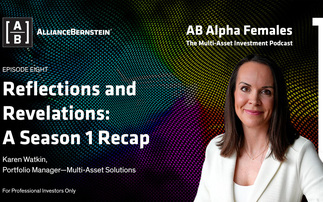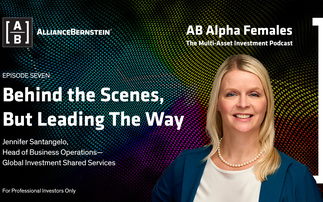The recovery in global growth that many investors were hoping for in 2019 did not materialise. On top of this, investors had to contend with significant uncertainty caused by geopolitics. But the promise of easier monetary support from the world's central banks has helped push down bond yields and force investors up the risk spectrum in search of higher returns. How does this divergence get resolved this year given that central banks have delivered?
A ‘bull rotation' could see this divergence narrow with data improving, yield curves steepening and more cyclical areas performing strongly. However, investors shouldn't rule out the possibility of a ‘bear rotation' driven by a further US slowdown and the realisation that technology companies' earnings may indeed be cyclical too.
The balance between these two scenarios is likely to be tipped by the path of the US consumer. Although US manufacturing is still weak - and non-manufacturing data has ‘caught down' too - the labour market remains tight and this has helped prop up the consumer. However, we have recently seen retail sales return to trend after a very strong run. Surveys of CFOs across industries continue to point to weakness in capital expenditures and confidence over the industry outlook is also precarious.
Meanwhile, the Chinese economy has shown improvement from Q4 2018 lows, but the targeted stimulus from Chinese policymakers this time around is unlikely to spur the rest of the world forward.
The benefits of a diversified toolkit
So what does this uncertainty mean for portfolio positioning at the start of this year? One of the key ways we are dealing with this backdrop at Fidelity Multi Asset is ensuring that our portfolios are truly diversified.
Traditional balanced portfolios have certainly been strong performers in recent years, but we believe that as we get further into the late-cycle and volatility picks up, it is important to have the ability to broaden-out portfolio holdings beyond equities and bonds.
Alternatives have an important role to play here - from loans, to infrastructure, to aircraft leasing, to renewables, to specialist investment approaches. This universe is highly heterogenous and research is critical: our dedicated analysts are a vital part of understanding the characteristics of these distinct strategies and the role they can play in an overall portfolio.
Our team uses a range of strategies from this broad universe to access opportunities, including hedge funds designed to take advantage of rising volatility. As we move into next year, these volatility-focused strategies may be an important part of our toolkit in responding to a changing investment landscape.
Will gold continue to glitter?
The benefits of gold may also come to the fore in 2020. It is another asset which offers defensiveness, whether expressed through direct physical exposure or gold-related equities. We have seen heightened valuations in recent months and strong price appreciation year-to-date, but based on our thesis, we think gold is still attractive.
The gold price will likely be driven by three main factors: overall risk sentiment, the strength of the US dollar and the level of real rates. We believe the first two of these factors have not yet come into play, with gold primarily driven by lower real rates after the Federal Reserve ‘pivot' in early 2019.
As we have seen markets push ahead of the fundamental backdrop, our team remains focused on being prepared for either a ‘bull rotation' or ‘bear rotation.' In this environment, large and well-resourced research teams can make a big difference in finding opportunities across regions and the capital structure. We will remain focused on identifying the assets most mispriced for an upside surprise in global growth, as well as the best defensive assets to hedge against uncertainty.
About the author
Chris Forgan is Portfolio Manager for The Fidelity Multi Asset Allocator and Open ranges. Prior to joining Fidelity in 2017, Chris was a Portfolio Manager at Henderson Global Investors, in their Multi Asset team focusing on their income fund range. Previously Chris worked as an analyst at Henderson Global Investors, a senior performance analyst at First State.
Important information
This information is for investment professionals only and should not be relied upon by private investors. Past performance is not a reliable indicator of future returns. Investors should note that the views expressed may no longer be current and may have already been acted upon. Changes in currency exchange rates may affect the value of investments in overseas markets. Investments in small and emerging markets can also be more volatile than other more developed markets. The value of bonds is influenced by movements in interest rates and bond yields. If interest rates and so bond yields rise, bond prices tend to fall, and vice versa. The price of bonds with a longer lifetime until maturity is generally more sensitive to interest rate movements than those with a shorter lifetime to maturity. The risk of default is based on the issuers ability to make interest payments and to repay the loan at maturity. Default risk may therefore vary between government issuers as well as between different corporate issuers. Fidelity's Multi Asset funds use financial derivative instruments for investment purposes, which may expose the funds to a higher degree of risk and can cause investments to experience larger than average price fluctuations. Reference in this document to specific securities should not be interpreted as a recommendation to buy or sell these securities, but is included for the purposes of illustration only. Issued by Financial Administration Services Limited, authorised and regulated by the Financial Conduct Authority. Fidelity, Fidelity International, the Fidelity International logo and F symbol are trademarks of FIL Limited.











